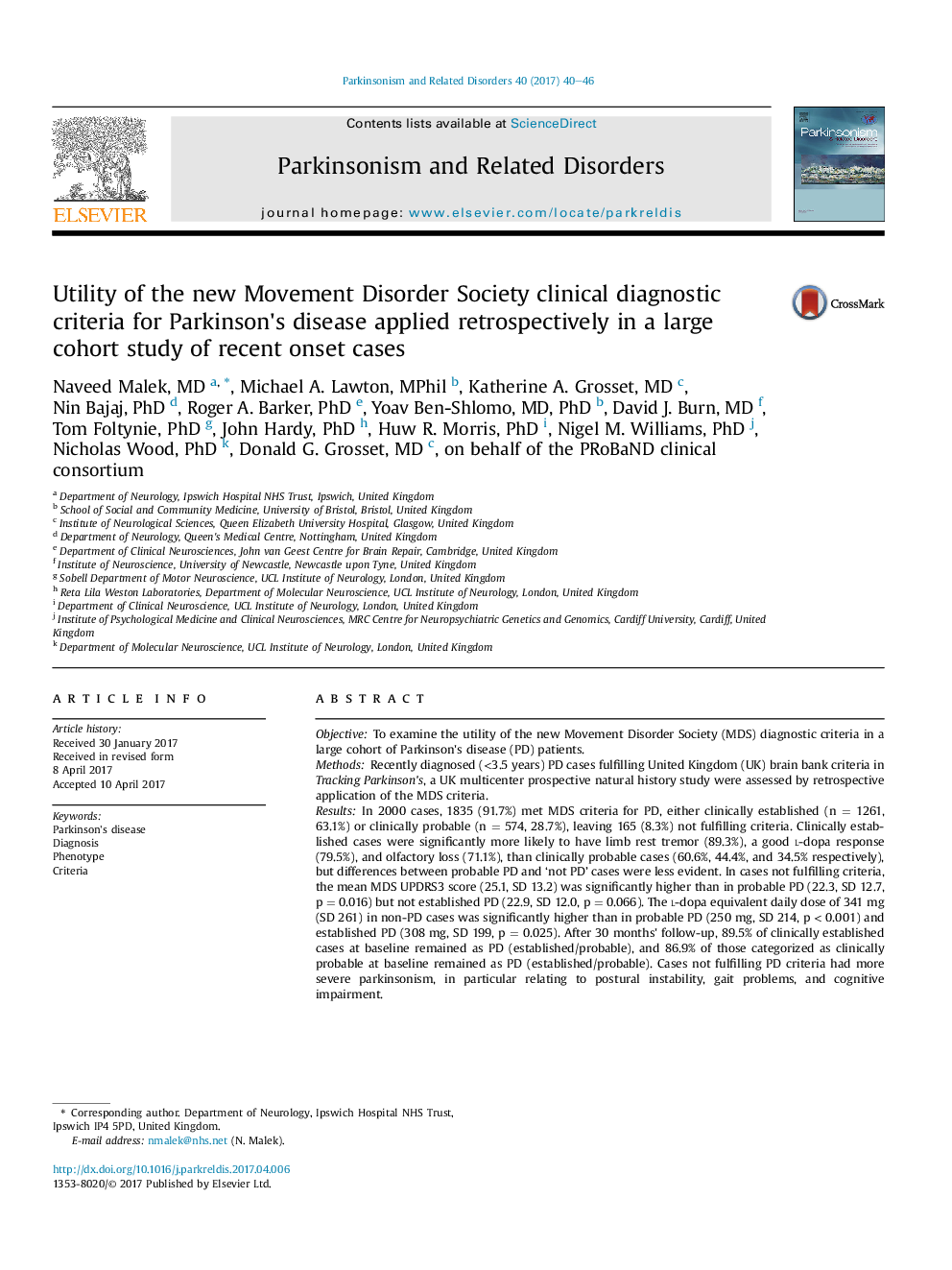| Article ID | Journal | Published Year | Pages | File Type |
|---|---|---|---|---|
| 5503799 | Parkinsonism & Related Disorders | 2017 | 7 Pages |
â¢The MDS diagnostic criteria for Parkinson's Disease were tested retrospectively in a large cohort study.â¢Over 90% of cases diagnosed clinically as PD fulfilled MDS diagnostic criteria for PD.â¢Over 60% were categorized 'Clinically established PD'; under 30% were 'Clinically probable PD'.â¢Cases categorized as 'not PD' (under 10%) had more severe, less therapy responsive parkinsonism.â¢Categorization as PD by the MDS criteria was 85% stable after 2.5 years of follow-up.
ObjectiveTo examine the utility of the new Movement Disorder Society (MDS) diagnostic criteria in a large cohort of Parkinson's disease (PD) patients.MethodsRecently diagnosed (<3.5 years) PD cases fulfilling United Kingdom (UK) brain bank criteria in Tracking Parkinson's, a UK multicenter prospective natural history study were assessed by retrospective application of the MDS criteria.ResultsIn 2000 cases, 1835 (91.7%) met MDS criteria for PD, either clinically established (n = 1261, 63.1%) or clinically probable (n = 574, 28.7%), leaving 165 (8.3%) not fulfilling criteria. Clinically established cases were significantly more likely to have limb rest tremor (89.3%), a good l-dopa response (79.5%), and olfactory loss (71.1%), than clinically probable cases (60.6%, 44.4%, and 34.5% respectively), but differences between probable PD and 'not PD' cases were less evident. In cases not fulfilling criteria, the mean MDS UPDRS3 score (25.1, SD 13.2) was significantly higher than in probable PD (22.3, SD 12.7, p = 0.016) but not established PD (22.9, SD 12.0, p = 0.066). The l-dopa equivalent daily dose of 341 mg (SD 261) in non-PD cases was significantly higher than in probable PD (250 mg, SD 214, p < 0.001) and established PD (308 mg, SD 199, p = 0.025). After 30 months' follow-up, 89.5% of clinically established cases at baseline remained as PD (established/probable), and 86.9% of those categorized as clinically probable at baseline remained as PD (established/probable). Cases not fulfilling PD criteria had more severe parkinsonism, in particular relating to postural instability, gait problems, and cognitive impairment.ConclusionOver 90% of cases clinically diagnosed as early PD fulfilled the MDS criteria for PD. Those not fulfilling criteria may have an atypical parkinsonian disorder or secondary parkinsonism that is not correctly identified by the UK Brain Bank criteria, but possibly by the new criteria.
